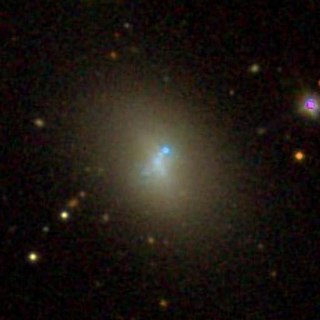
NGC 7077 is a lenticular blue compact dwarf galaxy located about 56 million light-years away from Earth in the constellation Aquarius. Discovered by astronomer Albert Marth on August 11, 1863, the galaxy lies within the Local Void.
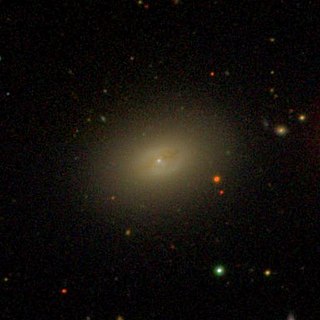
NGC 4506 is a spiral galaxy located around 50 million light-years away in the constellation Coma Berenices. It is classified as peculiar due to the presence of dust that surrounds its nucleus. NGC 4506 was discovered by astronomer William Herschel on January 14, 1787. It is a member of the Virgo Cluster.

NGC 6028 is a barred lenticular galaxy and a ring galaxy located about 200 million light-years away in the constellation Hercules. Ring galaxies such as NGC 6028 are also known as Hoag-type galaxies as they may have a resemblance to the prototype, Hoag's Object. NGC 6028 was discovered by astronomer William Herschel on March 14, 1784. It was then rediscovered by astronomer Guillaume Bigourdan on May 4, 1886.

NGC 6039 is a massive lenticular galaxy located about 460 million light-years away in the constellation Hercules. NGC 6039 was discovered by astronomer Édouard Stephan on June 27, 1870 and later rediscovered by astronomer Lewis Swift on June 27, 1886. NGC 6039 is member of the Hercules Cluster, which is part of the CfA2 Great Wall.

NGC 6040 is a spiral galaxy located about 550 million light-years away in the constellation Hercules. NGC 6040 was discovered by astronomer Édouard Stephan on June 27, 1870. NGC 6040 is interacting with the lenticular galaxy PGC 56942. As a result of this interaction, NGC 6040's southern spiral arm has been warped in the direction toward PGC 56942. NGC 6040 and PGC 56942 are both members of the Hercules Cluster.

NGC 521, also occasionally referred to as PGC 5190 or UGC 962, is a barred spiral galaxy located approximately 224 million light-years from the Solar System in the constellation Cetus. It was discovered on 8 October 1785 by astronomer William Herschel.
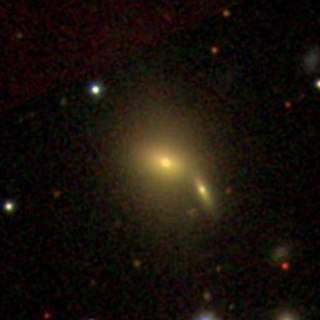
NGC 6043 is a lenticular galaxy located about 444 million light-years away in the constellation Hercules. NGC 6043 was discovered by astronomer Lewis Swift on June 27, 1886. The galaxy is a member of the Hercules Cluster.

NGC 6044 is a lenticular galaxy located about 465 million light-years away in the constellation Hercules. NGC 6044 was discovered by astronomer Lewis Swift on June 27, 1886. It was then rediscovered by astronomer Guillaume Bigourdan on June 8, 1888. NGC 6044 is a member of the Hercules Cluster.

NGC 6045 is a barred spiral galaxy located about 450 million light-years away in the constellation Hercules. NGC 6045 was discovered by astronomer Lewis Swift on June 27, 1886 and is a member of the Hercules Cluster. It is also a LINER galaxy.
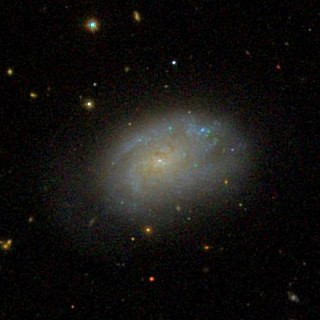
NGC 4595 is a spiral galaxy located about 42 million light-years away in the constellation Coma Berenices. NGC 4595 was discovered by astronomer William Herschel on January 14, 1787. NGC 4595 is a member of the Virgo Cluster.

NGC 4659 is a lenticular galaxy located about 54 million light-years away in the constellation Coma Berenices. NGC 4659 was discovered by astronomer William Herschel on April 12, 1784 and is a member of the Virgo Cluster.

NGC 3816 is a lenticular galaxy located about 270 million light-years away in the constellation Leo. It was discovered by astronomer Heinrich d'Arrest on May 9, 1864. NGC 3816 is a member of the Leo Cluster.
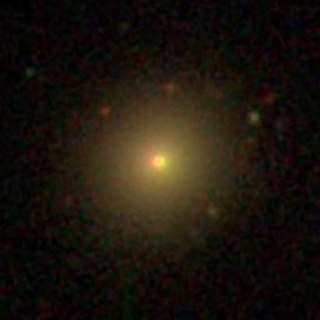
NGC 6053 is an elliptical galaxy located about 450 million light-years away in the constellation Hercules. The galaxy was discovered by astronomer Lewis Swift on June 8, 1886 and is member of the Hercules Cluster.
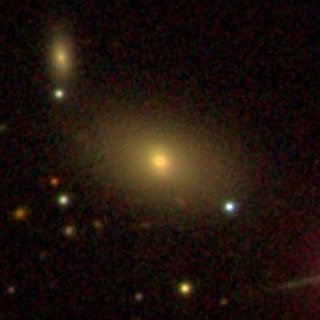
NGC 6054 is a barred lenticular galaxy located about 460 million light-years away in the constellation Hercules. It was discovered by astronomer Lewis Swift on June 27, 1886. It was then rediscovered by astronomer Guillaume Bigourdan on June 1, 1888. PGC 57073 is often misidentified as NGC 6054. NGC 6054 is a member of the Hercules Cluster.
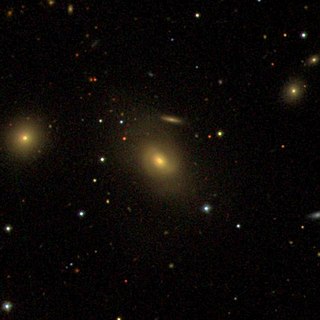
NGC 6055 is a barred lenticular galaxy located about 450 million light-years away in the constellation Hercules. The galaxy was discovered by astronomer Lewis Swift on June 8, 1886. It also a member of the Hercules Cluster and is a LINER galaxy.

NGC 6056 is a barred lenticular galaxy located about 525 million light-years away in the constellation Hercules. It was discovered by astronomer Lewis Swift on June 8, 1886. It was then rediscovered by Swift on June 8, 1888 and was later listed as IC 1176. NGC 6056 is a member of the Hercules Cluster.

NGC 6061 is a lenticular galaxy with radio activity located about 490 million light-years away in the constellation Hercules. The galaxy is classified as a head-tail radio galaxy and was discovered by astronomer Lewis Swift on June 8, 1886. NGC 6061 is a member of the Hercules Cluster.

NGC 4895 is a lenticular galaxy located 330 million light-years away in the constellation Coma Berenices. The galaxy was discovered by astronomer Heinrich d'Arrest on May 5, 1864 and is a member of the Coma Cluster.

NGC 688 is a barred spiral galaxy with starburst activity located 190 million light-years away in the constellation Triangulum. It was discovered by astronomer Heinrich d'Arrest on September 16, 1865 and is a member of the galaxy cluster Abell 262.
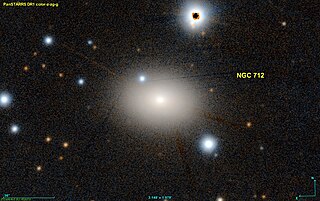
NGC 712 is a lenticular galaxy located 230 million light-years away in the constellation Andromeda. It was discovered by astronomer John Herschel in October 1828 and is a member of Abell 262.




















